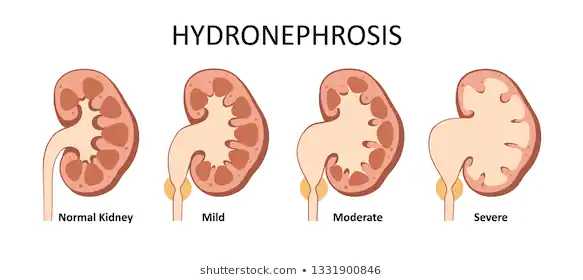I want to commend you for your write-up last week on kidney stones. My family and I, as well as members of my office learnt a lot from it. Kindly note that I am suffering from hydronephrosis at the moment, and wish you use your column to provide simple information about it.
Benedict C
Thanks Benedict for your kind words and I wish you quick recovery. Hydronephrosis is a condition that typically occurs when the kidney swells due to the failure of normal drainage of urine from the kidney to the bladder.
This swelling most commonly affects only one kidney, but it can involve both kidneys. Hydronephrosis isn’t a primary disease. It’s a secondary condition that results from some other underlying disease. It’s a structural condition that’s the result of a blockage or obstruction in the urinary tract.
What are the symptoms?
Normally, urine flows through the urinary tract with minimal pressure. Pressure can build up if there’s an obstruction in the urinary tract. After urine builds up for an extended period, kidney can enlarge and may become so engorged with urine that it starts to press on nearby organs. If it is left untreated for too long, this pressure can cause kidneys to lose function permanently. Mild symptoms of hydronephrosis are urinating more frequently and an increase in the urge to urinate. Other severe symptoms are:
- 1. Pain in the abdomen or flank
- 2. Nausea and vomiting
- 3. Pain when urinating and incomplete voiding
- 4. Fever
Interrupting the flow of urine increases chances of getting a urinary tract infection (UTI). This is why UTIs are one of the most common complications of hydronephrosis. Some signs of a UTI include:
- 1. Cloudy urine and painful urination
- 2. A weak urine stream
- 3. Back pain and bladder pain
- 4. Chills
What are the causes of Hydronephrosis?
Hydronephrosis isn’t a disease, it can be due to internal and external conditions that affect the kidney and the urinary collecting system. One of the most common of causes of hydronephrosis is acute unilateral obstructive uropathy. This is a sudden development of an obstruction in one of the ureters, which are the tubes that connect kidneys to bladder.
The most common cause for this blockage is a kidney stone, but scarring and blood clots can also cause acute unilateral obstructive uropathy. A blocked ureter can cause urine to go back up into the kidney, which causes swelling. This backflow of urine is known as vesicoureteric reflux (VUR).
Other causes of blockage may include:
- 1. A kink in the ureteropelvic junction, which is where the ureter meets the pelvis of the kidney
- 2. An enlarged prostate gland in men
- 3. Pregnancy, which causes a compression due to a growing fetus
- 4. Tumors in or near the ureter
- 5. A narrowing of the ureter from an injury or birth defect.
How is Hydronephrosis diagnosed?
Catheter is used to drain some of the urine from the bladder. If they’re unable to release a large amount of urine this way, it could mean that the obstruction is in the bladder or urethra. The urethra is a tube that carries urine from bladder to the outside of the body. Also a renal ultrasound or CT scan may be performed to get a closer look at the extent of the swelling and to possibly locate the area of the blockage.
Treatment options for Hydronephrosis?
Treatment for hydronephrosis primarily focuses on getting rid of whatever is blocking the flow of urine. The treatment option will depend on the cause of obstruction. If a blocked ureter is causing the condition, some of the options below will be done:
- 1. Insert a ureteral stent, which is a tube that allows the ureter to drain into the bladder
- 2. Insert a nephrostomy tube, which allows the blocked urine to drain through the back
- 3. Prescribe antibiotics to control infection
Obstruction might be removed with surgery. If something like scar tissue or a blood clot is causing the blockage and if the cause of hydronephrosis is a kidney stone, surgery is needed to remove it.

 Join Daily Trust WhatsApp Community For Quick Access To News and Happenings Around You.
Join Daily Trust WhatsApp Community For Quick Access To News and Happenings Around You.

